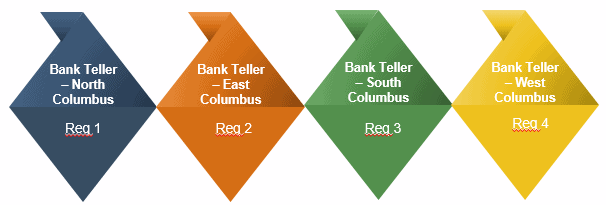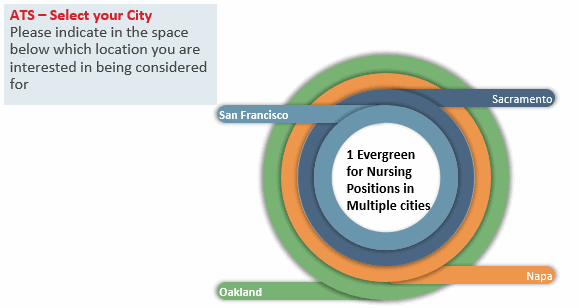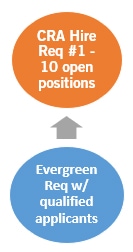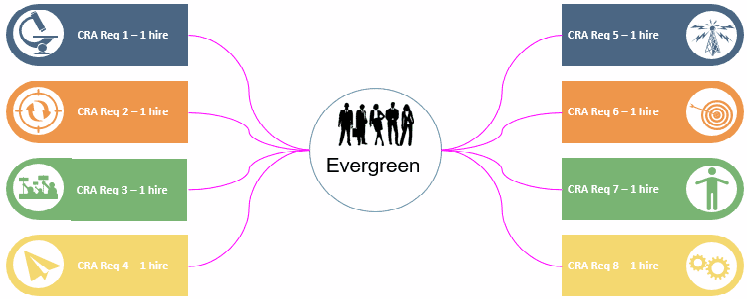Even if you are not a federal contractor, there are ways to use evergreen requisitions effectively and this article will provide those tips. This article is not designed to address every use of evergreen requisitions or how they relate to sourcing/trolling requisitions. We will address those in a later article. We will also hosted a webinar through LJN on this topic, which you can find here.
What are Evergreen Requisitions?
Evergreen requisitions provide a pool of candidates to fill multiple job openings. Often they are used when companies do have the capability of allowing multiple hires onto a single requisition and they do not want multiple requisitions on their site, for example, 20 Teller requisitions in Columbus, Ohio. They allow candidates to apply one time for consideration for multiple openings, for example, 20 Bank Teller openings in Columbus, Ohio. These requisitions allow for a steady flow of job candidates and are typically for high volume, high turnover positions where there is an ongoing need. In this article, we are talking about an evergreen requisition used to fill multiple openings for the same type of position, not a trolling or sourcing requisitions, which might be used to gather candidates for different types and levels of jobs.
Evergreen requisitions go by several names, such as “dummy” requisition, “Z” requisition, or even “never ending” requisition. For our purposes, we will stick with the term “evergreen” requisition.
Evergreen requisitions can be extremely useful. However, if not managed properly, they may become problematic for reporting within and outside of your organization. One very important thing to keep in mind, particularly if you are a federal contractor, is that, for filled positions, you must be able to identify exactly who was considered for each opening using the OFCCP Internet Applicant Rule. This information is required for developing a compliant Affirmative Action Program (AAP).
Clear and Concise Content is Key
As with any other requisition, employers should create evergreen requisitions that will attract qualified candidates to the company:
- Use key words so that the listing can be found easily when using a word search function.
- Be specific as to the physical location of the position so that time is not wasted with applicants not interested in certain locations.
- Describe the company culture and clearly detail expectations.
- Be clear in defining basic versus preferred qualifications.
- Consider adding a realistic job preview (e.g., videos, online or in-person tours).
It is important to review the applications in evergreen requisitions periodically to ensure that those who do not meet basic qualifications for the position are dispositioned (coded out) and removed from the applicant pool. Frequent review will help you in the event of an audit. Always remember that the larger the applicant pools, the greater likelihood that there will be statistically significant differences in selection rates.
Location, Location, Location
If you are a federal contractor, evergreen requisitions should be used to fill openings for the same job at the same location or locations within the same city and/or AAP. Creating evergreen requisitions that cover multiple jobs and / or multiple city/state locations may confuse candidates and make accurate tracking difficult. The only exception to creating evergreen requisitions for multiple cities/states is if it is for a remote location where the hire could be located anywhere in the United States.
If an employer does want to create a requisition to fill openings in multiple locations within the same city, there are a couple of options that could be considered. To effectively track who was considered for which positions, you could consider creating several evergreen requisitions broken into city quadrants, for example:

If you must use the requisition to fill the same job in multiple cities (not recommended) and your applicant tracking system (ATS) allows, you can list the various locations within the evergreen requisition and then have the candidate check a box or identify which of the locations is of interest to them. This will make tracking for compliance purposes easier and assist the recruiter when considering them for open positions.

Don’t forget, for compliance purposes, you must maintain the records of each person who met basic qualifications and was considered for the job.
Evergreen Requisitions are Not Forever
Evergreen requisitions should be open for a limited time, partially depending on the number of applicants and how quickly openings are being filled. The higher the number of applicants and rate of filling positions, the more quickly an employer should consider closing the evergreen requisition and posting a new one. We recommend that evergreen requisitions be closed monthly or quarterly, and, if possible, shouldn’t cross fiscal or affirmative action years. Why? If you are a federal contractor, it will be extremely difficult to meet your tracking obligations if your evergreen requisitions cross AAP plan years.
Employers should consider placing a disclaimer on the requisition stating the requisition close date and telling applicants if they have not been notified of a position by that day they will need to reapply.
Limiting the time a requisition is open will reduce the number of people in the pool, increase your ability to effectively monitor and track applicants and hires, and, therefore reduce your risk.
Pitfalls and Considerations for Evergreen Requisitions
There are many ways to manage evergreen requisitions. In all cases, it is critical to review applications often to disposition those who are not qualified, thus reducing the applicant pool.
Let’s take a look at some common scenarios.
Scenario: Suppose you create an evergreen requisition for customer relations associate (CRA) positions and you need to fill ten openings by the end of January 2020.
Option 1: Your ATS allows multiple hires off a single requisition. You would create a “real” requisition for the ten openings. You could move all applicants who meet basic qualifications to the real requisitions for further processing. This will represent your applicant pool. Alternatively, if the evergreen requisition contains more applicants who meet basic qualifications than you can process, use a data management technique (DMT) such as moving the first 50 (or some other number based on how many you can realistically process) based on application date (i.e., the first 50 who applied). All those not considered for these ten openings would remain in the requisition for future consideration. Candidates who do not meet the basic qualifications would be coded as such and would drop out of consideration for any future positions filled from that evergreen requisition. Don’t forget, if you are a federal contractor you must maintain the records of all individuals that expressed interest.
 |
You use a DMT and consider the first 50 people who applied and met basic qualification for these 10 positions – all 50 people would move from Evergreen into a formal (or child) requisition. |
Option 2: Your ATS only allows one hire per requisition and does not allow movement of candidates from requisition to requisition. Let’s say that you hire Customer Relations Associate (CRA) Level I’s on a frequent basis. You could open an evergreen requisition for Customer Service Representative Level I’s in Atlanta, GA. Thus, the basic qualifications and location for all openings are the same. Let’s say you need to make 8 hires over a 3 month period from the requisition which contains 500 job seekers. Using a (DMT), you consider the first 150 candidates in the evergreen requisition. You phone screen 100 who meet basic qualification and identify 50 for the hiring manager interviews. The hiring manager selects 25, and all 25 candidates accept the offers.

The concern with using evergreens this way is that you would somehow need to track the 100 people who met basic qualifications and were considered for those eight positions. This may be a manual tracking or you may find another systematic way to track them since you are not able to move them into each of the requisitions. If you are not able to track them, and you are a federal contractor, this will become problematic during an audit if adverse impact indicators are present.
Higher Risk - Option 3: You open an evergreen requisition for Customer Service Representatives and allow job seekers to apply for multiple levels and locations. Perhaps the job posting specifies the basic qualifications for Level 1 and 2 and indicates that there are openings in Atlanta and St Louis. You process job seekers from this requisition and hire Customer Service Representative Level 1s and 2s for jobs in Atlanta and St. Louis. When processing job seekers, the same applicant pool may have to be reported for both jobs and both locations even though everyone may not have been interested or met the basic qualifications for either level, or both locations.
If you are a federal contractor, we discourage you from using this method, or find some solutions to assist with allowing candidates to opt in to be considered only for specific locations and jobs. We have seen scenarios like this in audit situations and they are a tracking nightmare. It is extremely difficult to determine which applicants were considered for which level jobs at which location.
An example would be an evergreen requisition that opened January 1 and was not closed until March 31. You had 8 jobs available, 1 in January, 2 in February and 5 in March. If there were 500 people in the evergreen requisition:
- Did you consider all 500 who were in the requisition for all 8 jobs?
- Did you really go back to those who applied in January and consider them for a March hire?
- Are you able to tell, with confidence, which applicants were considered for level 1 and which were considered for level 2?
- Can you tell, with confidence, that home address is an identifier as to where a person wants to work? What happens if applicants are looking to move to one of the other posted locations? How would you know to consider them?
There are many ways to use evergreen requisitions. We have only covered a few. Evergreen requisitions do not have to be the villain of compliance if used properly. The best way to manage evergreen requisitions is to make sure that the requisition applies to the same job in the same location or city (same AAP if you are a federal contractor). Be clear about basic versus preferred qualifications and find a way to track exactly who is considered for each job opening.


